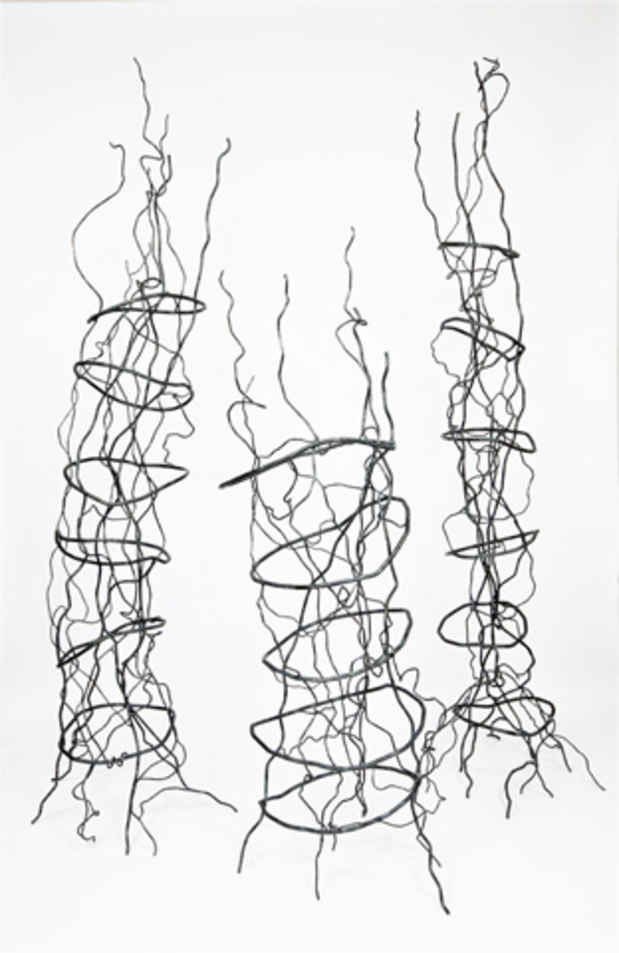“Crossing the Line” Exhibition
June Kelly Gallery

This event has ended.
An exhibition of drawings, paintings and sculpture by six artists who use the line as the basic building block of their art will open at the June Kelly Gallery.
A line can define space, create pattern, imply movement or texture and allude to mass or volume. As Paul Klee said, “A line is a dot that went for a walk.”
These six artists use the line in innovative, imaginative and seductive combinations. They use lines to invent unusual relationships that explore and capture an intensely active and sensuous imagery while coalescing in a harmonious whole. Their lines can describe a sense of vast space, or perhaps awesome silence and serenity. They create an atmosphere that teases and engages the mind and eye — sometimes inducing deep philosophical musings, or thrusting the imagination into a pulsing swirl.
Mark Alsterlind uses the line in his paintings to unify the patches of color that he scatters on the collaged pages of antiques books that he has created. His lines keep the viewer locked into the heart of his spontaneous compositions.
Norman Lewis developed an unusual personal calligraphic style of fluid lines
to suggest groups of figures in random activities that the artist leaves to the viewer to interpret. His aesthetic energy flows across the surface of the canvas, and as the viewer studies it, more ambiguous shapes come forward.
Elie Nadelman uses no line other than the curve, which to his eye possesses freshness and force. His lines are dazzling in their subtle variations in shape, weight and density, his gestures even changing in different segments of the same line. One critic commented that “The variety of papers and the different ways they hold ink and other marks show the pleasure Nadelman took in the unique physicality of the drawing medium.”
Sky Pape uses the line as an isolated gesture with an almost independent presence. “I try to integrate the forms with an intuitive energy that references language – both abstract and minimal,” she says. Her drawings are exploratory in both category and historical tradition; they are also adventurous. They are arresting as visual statements as they seek a sculptural volume. As she points out, the drawings are “driven by the existence and effects of incomprehensible, random forces within a rational system of implied order.” Mystery, an important aspect of Pape’s aesthetic, is thus rendered visible.
Rebecca Welz has developed a distinctive style in which her welded steel sculptures often cross boundaries and challenge the limitations of her material.
These pieces — twisted, bent and welded — use that approach while simultaneously highlighting the fragility of many natural forms and the whimsy of fantasy.
Welz investigates physical space, weightlessness and pictorial elements of the form by redefining the possibilities of the steel with which she works. Her use of an eclectic vocabulary — gestural lines, definitive intertwining twists and turns, and the mesmerizing nuances provided by her tools and her imagination — is an excellent indication of the broad sweep of the way she works.
In Incidental Alchemy, Nola Zirin has segmented her canvas with lines like lightning bolts across the plane. Her colors are the rich hues of a late summer evening on the New York skyline. In Nocturne #2, Zirin has created a mystical universe with carefree planets on their orbital paths, paying scant attention to their destination.
Media
Schedule
from June 26, 2015 to July 31, 2015
Artist(s)
Mark Alsterlind, Norman Lewis, Elie Nadelman, Sky Pape, Rebecca Welz, Nola Zirin